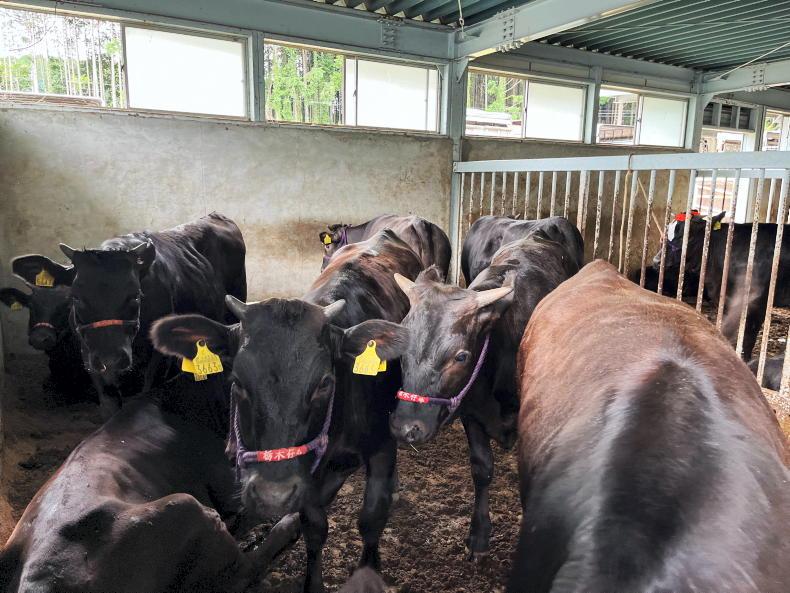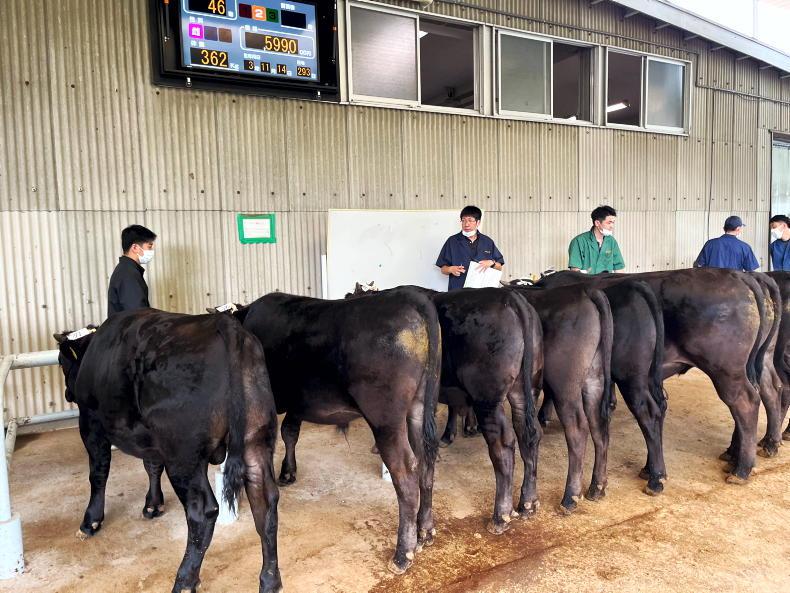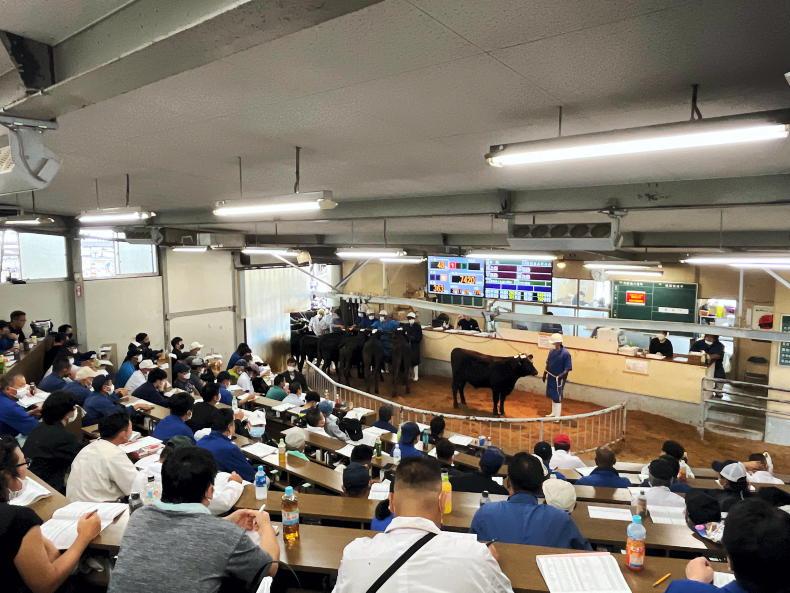Nine- to 10-month-old Wagyu weanlings with an average weight of 300kg made prices exceeding €4,000 at a sale outside Tokyo, Japan, on Friday.
The weanling sale, visited by the Irish Farmers Journal and Bord Bia, saw approximately 1,000 weanlings of the Japanese breed presented for sale.
2/ Wagyu weanlings, like pets, haltered & tied before being lined up in order, ready for sales ring. Lot number and docket ready to go on head @farmersjournal @FJBeef @ajwwoods pic.twitter.com/92UW6n2eVf
— Barry Murphy (@BarryMurphyIFJ) September 2, 2022
The mart runs the auction twice monthly and there was strong attendance by sellers and buyers on the day.

The weanlings, both bullocks and heifers, are bought for further feeding and either sold at 20 months old for finishing or brought the whole way through to 30 months by the buyer for slaughter at approximately 850kg.

Wagyu cattle in Japan kill out at about 68%, with the desired carcase weight of 550kg and more fetching prices of €20/kg to €30/kg, depending on the beef’s marbling and quality.
Mart system
All cattle were sold individually, with the name of the animal’s sire and their dam’s sire advertised by the auctioneer as they enter the ring. The same breeding background is displayed in a catalogue to accompany the sale.
3/ Weanlings moved through mart on pully system with halter attached to sliding chain hanging overhead @farmersjournal pic.twitter.com/T9LWwXgTnv
— Barry Murphy (@BarryMurphyIFJ) September 2, 2022
The livestock are managed on a pulley system, where they are haltered and then moved around the mart, tethered to a movable chain which hangs overhead.
They are grouped in pens prior to being moved by the mart’s cattle drovers, one by one and tied in rows before their turn to enter the ring.

The weanlings are also washed and brushed prior to sale to show the animals' coat and condition.

Lot numbers are tied with a band to the animal’s head and the buyer’s docket is pinned to the animal’s pen for collection.
5/ Bidding quick in end for prize Wagyu weanlings. Sale is held twice monthly with these animals bought for feeding on for slaughter at 30 months. Sale catalogue shows animal’s breeding @farmersjournal @ajwwoods pic.twitter.com/B1UB996pHS
— Barry Murphy (@BarryMurphyIFJ) September 2, 2022
The mart ran a strict disease prevention protocol, with each vehicle having to drive through disinfectant when arriving at the premises and there were several shoe disinfection points on the premises.






 This is a subscriber-only article
This is a subscriber-only article










SHARING OPTIONS: